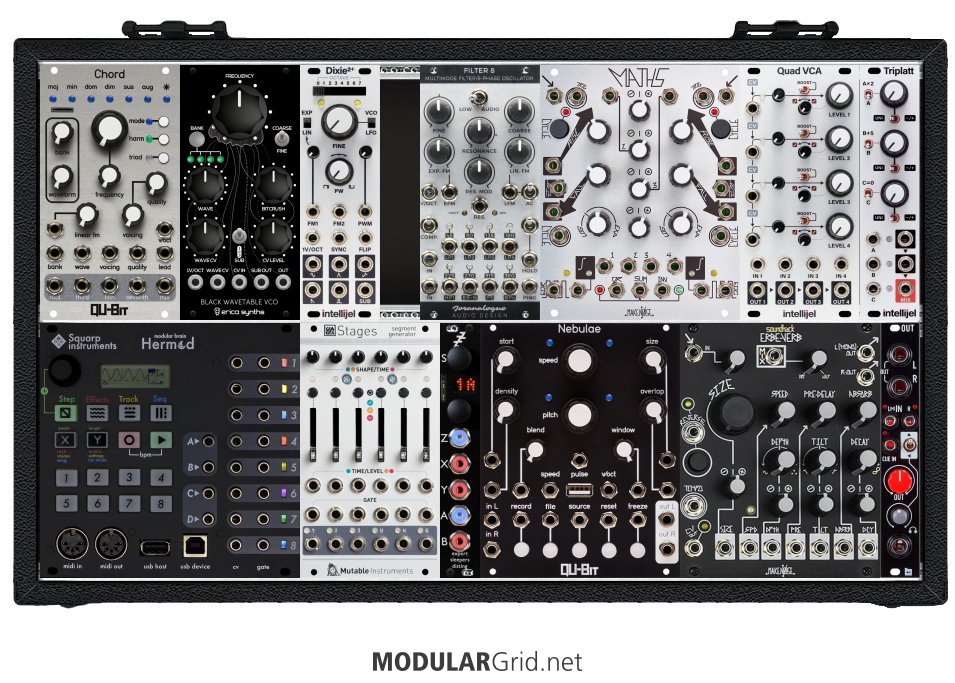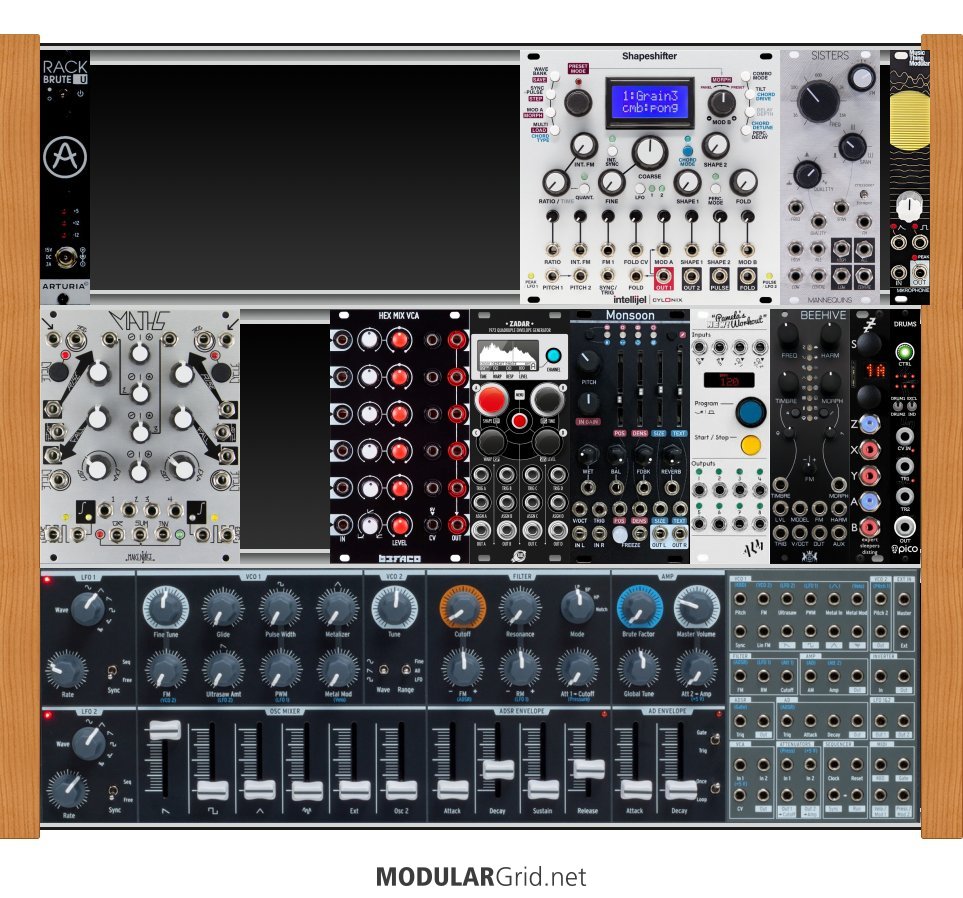Thanks for the info Lugia. I have a few questions below:
Clouds is out of production, so unless you have one on hand or want to go thru sourcing a used one, you're better off using a third-party build. These also tend to be considerably smaller, which is also useful. The Peaks is in the same situation, btw.
In my original build, I was using clones of those modules, including the uClouds. I took them out and put in the Mutable ones for clarity's sake. I plan on going 3rd party for cost savings alone.
If you have this paired with a 2s, you might want to look into some modules which can screw around with timing, particularly if you want to get better use out of the Euclidean Circles. Logic modules are a must for manipulating gate behavior, plus adding some clock dividers/multipliers would also probably prove useful.
I'm really lost in this area. What are the big names in logic modules? Are there any good youtube video tutorials or demonstrations? I was looking at the Music Thing Modular Turing Machine MkII, but wasn't sure if that was a good idea or not. Is that a logic module?
Clock dividers and multipliers make sense with the 2s. Thanks for that point of view.
Buffered mult: unnecessary. If you have 4-5 VCOs to drive with a single CV, you'd need it. I advocate using NO multiple modules on small builds like this, btw; you can get the job done with inline mults and/or stackcables and save some panel space.
Sounds good. Thanks.
Add another VCO. Even if you're using something like Plaits as VCO 1, having a second VCO to detune or sync against it will yield some excellent (and bigger-sounding) results. This also means you'd need to add a proper mono mixer to combine your VCO outs, and after that you might consider a CVable waveshaper (Tiptop's is a good choice) to get more timbral variety.
I have both Plaits and the Minibrute 2 as VCO's. Should I add more?
Plus, add a quantizer; yes, the 2s has that, but one with various scalar patterns might come in handy to get some cross-modal lines going against the 2s.
With the 2S and the Disting, won't I be good with 2 quantizers? I could go more dedicated if needed,but I'm trying to keep as multifunctional as I can in my modules.
Have you considered adding effects, such as delay, reverb? Again, this is something that really fattens up/complicates your sound, letting you get more out of what's here.
I definitely want reverb, but doesn't Clouds & Disting have reverb?
Lastly, add some modulation sources such as envelope generators and LFOs. The Maths is useful, but you need more of this sort of thing, potentially along with a couple more linear, DC-coupled VCAs for manipulating CVs and modulation signals. Perhaps some attenuverters would go well here, too, for some nuanced control over your modulation.
Why wouldn't the Quad VCA I have in place not meet these needs? I'm a bit confused here as well.
Not too bad a start, otherwise. But it's got a ways to go. Try and keep things small when populating a cab this small. And also, watch your module depths, as the Rackbrutes really only have about 40mm in practicality.
-- Lugia
Thanks for the guidance!



